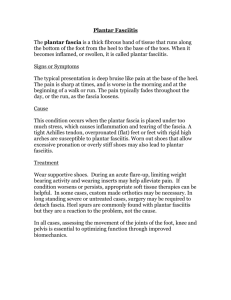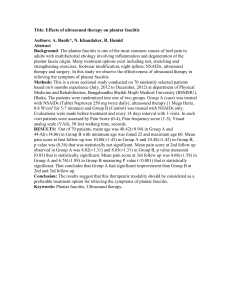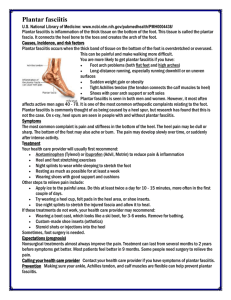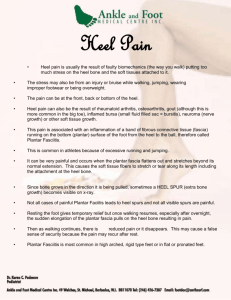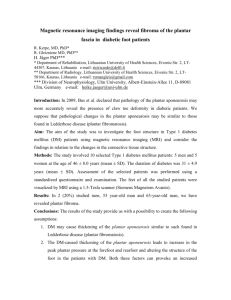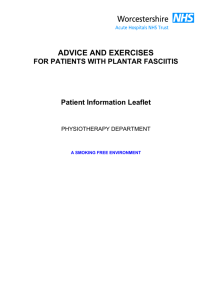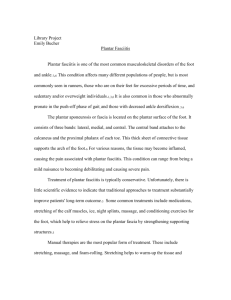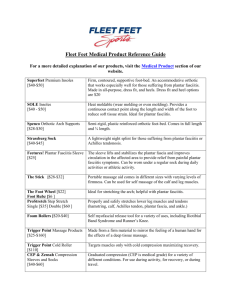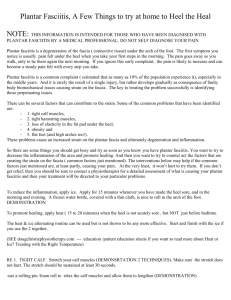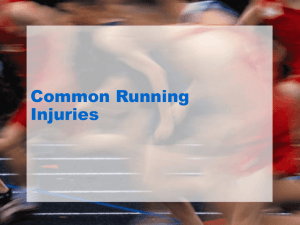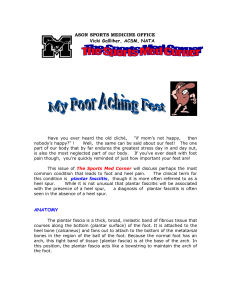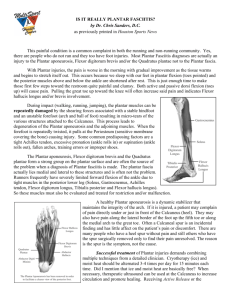Plantar Faciitis
advertisement
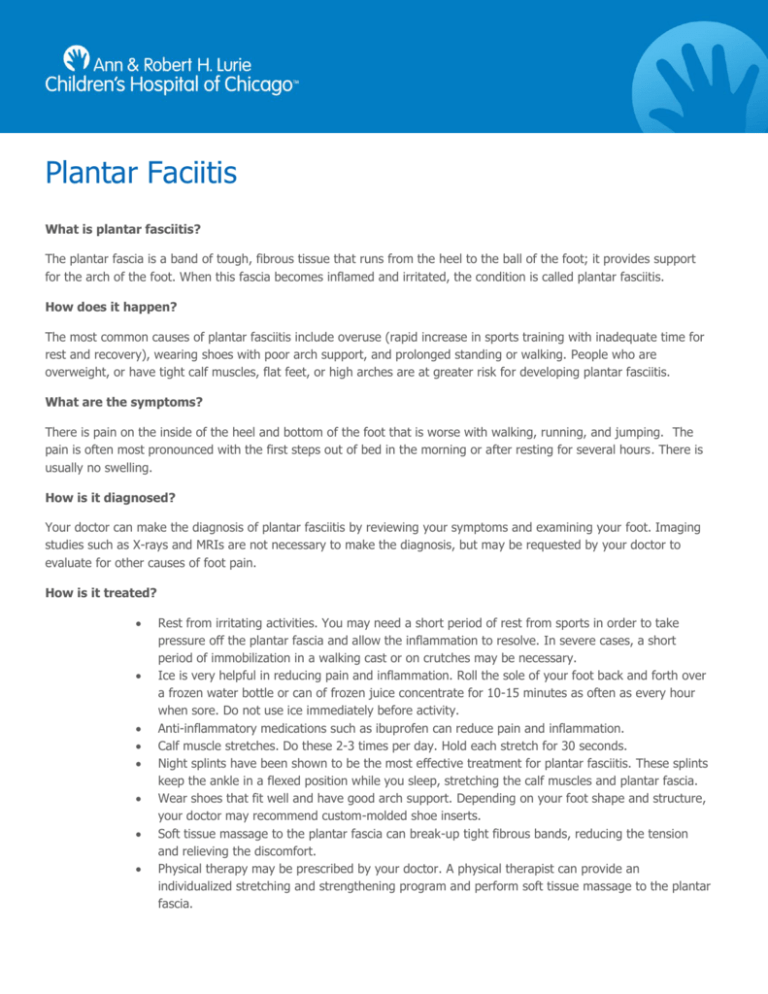
Plantar Faciitis What is plantar fasciitis? The plantar fascia is a band of tough, fibrous tissue that runs from the heel to the ball of the foot; it provides support for the arch of the foot. When this fascia becomes inflamed and irritated, the condition is called plantar fasciitis. How does it happen? The most common causes of plantar fasciitis include overuse (rapid increase in sports training with inadequate time for rest and recovery), wearing shoes with poor arch support, and prolonged standing or walking. People who are overweight, or have tight calf muscles, flat feet, or high arches are at greater risk for developing plantar fasciitis. What are the symptoms? There is pain on the inside of the heel and bottom of the foot that is worse with walking, running, and jumping. The pain is often most pronounced with the first steps out of bed in the morning or after resting for several hours. There is usually no swelling. How is it diagnosed? Your doctor can make the diagnosis of plantar fasciitis by reviewing your symptoms and examining your foot. Imaging studies such as X-rays and MRIs are not necessary to make the diagnosis, but may be requested by your doctor to evaluate for other causes of foot pain. How is it treated? Rest from irritating activities. You may need a short period of rest from sports in order to take pressure off the plantar fascia and allow the inflammation to resolve. In severe cases, a short period of immobilization in a walking cast or on crutches may be necessary. Ice is very helpful in reducing pain and inflammation. Roll the sole of your foot back and forth over a frozen water bottle or can of frozen juice concentrate for 10-15 minutes as often as every hour when sore. Do not use ice immediately before activity. Anti-inflammatory medications such as ibuprofen can reduce pain and inflammation. Calf muscle stretches. Do these 2-3 times per day. Hold each stretch for 30 seconds. Night splints have been shown to be the most effective treatment for plantar fasciitis. These splints keep the ankle in a flexed position while you sleep, stretching the calf muscles and plantar fascia. Wear shoes that fit well and have good arch support. Depending on your foot shape and structure, your doctor may recommend custom-molded shoe inserts. Soft tissue massage to the plantar fascia can break-up tight fibrous bands, reducing the tension and relieving the discomfort. Physical therapy may be prescribed by your doctor. A physical therapist can provide an individualized stretching and strengthening program and perform soft tissue massage to the plantar fascia. Treatments such shock wave therapy and corticosteroid injections are uncomfortable for most people and there is little evidence to show that they speed recovery. When can I return to activity and sports? The goal is to return to your sport or activity as quickly and safely as possible. Everyone recovers from injury at a different rate. Your return to sport will be determined by how soon your injury resolves, not by how many days or weeks it has been since the injury occurred. In general, the longer you have had symptoms before starting treatment the longer it will take for the injury to heal. You can return to sports when your pain is minimal and is not limiting your ability to train or perform. However, keep in mind that pushing through significant pain will only make the injury worse. While 90% of people with plantar fasciitis report full recovery after 2 months of treatment, some have more severe symptoms that can take many months of treatment to completely resolve. How can Plantar Fasciitis be prevented? Perform a proper warm-up before starting any activity. Ten minutes of light jogging, cycling, or calisthenics before practice will increase circulation to cold muscles and tissues, making them more pliable so that they are less prone to injury. Wear shoes that fit well, have good arch support, and are appropriate for the activity. Replace worn-out shoes promptly. Stretch tight muscle groups. The ideal time to stretch is after exercise or after an active warm-up. Hold each stretch for 30 seconds. Don’t bounce. Do not play through pain. Pain is a sign of injury, stress, or overuse. Rest is required to allow time for the injured area to heal. If pain does not resolve after a couple days of rest, consult your physician. The sooner an injury is identified, the sooner proper treatment can begin. The result is shorter healing time and faster return to sport.
